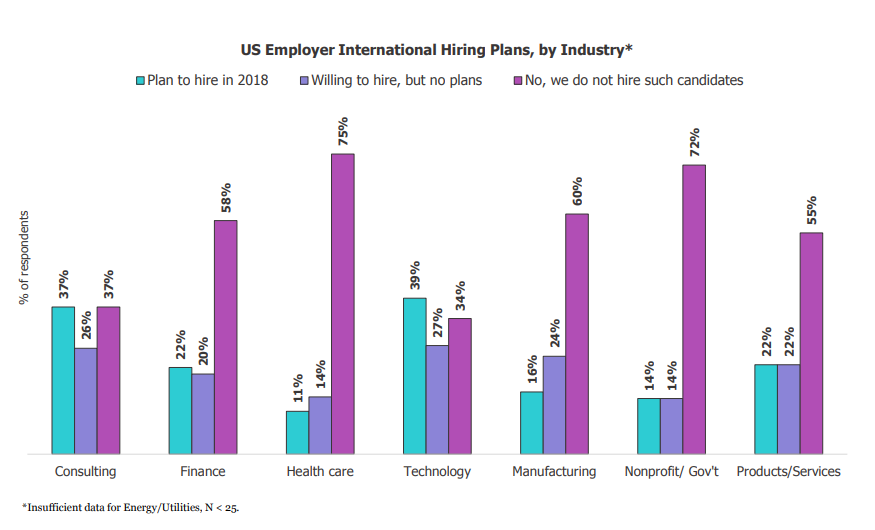Columbia Business School Talks Taxing Multinational Corporations

The first step toward social responsibility is, arguably, fair taxation. There’s just one problem—for years, multinational corporations have raced to pay the fewest taxes or avoid paying it altogether. For example, Apple employs a few hundred people in Ireland, so it falls under the .005 percent tax bracket. And Apple isn’t the only multinational company to do so.
Northwestern Kellogg Faculty Offer Career Development Advice

To develop your career, you have to take steps to make it happen—strategic ones. To help, Northwestern University’s Kellogg School of Management faculty got together, offering five pieces of advice for career development, no matter where you are professionally.
1. Build Influence in Your Organization
You don’t need to be a manager or team leader to influence your organization. Power in the workplace isn’t about coercing people. Instead, it’s about “mobilizing political support,” says Management and Organizations Professor William Ocasio.
To build this type of political capital, he recommends seeking out assignments that are likely to succeed to build your good reputation early and quickly. He also recommends understanding your organization’s culture, so that you advertise yourself appropriately.
2. Learn to Negotiate
According to Victoria Medvec, Professor of Management and Organizations, you need to learn to negotiate if you want the best assignments and promotions. She recommends thinking through what the other side needs and then presenting your skills and experience in such a way that you fill in the blanks. She also says that you need to lead the discussion by making the first offer.
“You will gain an advantage by creating the starting point, putting the right issues on the table, and being the one who frames the rationale,” Medvec says.
3. Become a Mentor
You can learn a lot by becoming a mentor. It offers many benefits, providing insight into both an organization’s political environment as well as the effectiveness of your organization’s communication strategy. According to Senior Fellow and adjunct professor Diane Brink, mentors learn to understand their organization better, and they learn new skills. Sometimes, just by talking with another person, you can figure out new tools, techniques, and applications essential to your own role.
4. Look for a Second Act
If you’ve climbed as high as you can in your given career, it’s not the end of the road. Clinical assistant professor Ellen Taaffe recommends looking for a potential “second act”—a new professional phase where you apply your skills and talents in a social or educational arena. The key is to find confidence in your story and create a larger narrative that explains who you are.
Just make sure that when you leave your current professional arena that you don’t drop all your contacts there. Instead, continue to cultivate your network and look for new doors that you can walk through.
5. Take Time for Self-Reflection
There’s always room for growth. One way to continue growing is to go through daily self-reflection, according to Clinical Professor of Strategy Harry Kraemer. He commends that you take time every night to define your priorities and hold yourself accountable. This is how leaders ward off disaster, plan for every outcome, and build stronger teams.
Some prompts for self-reflection:
- What am I proud of? What am I not proud of?
- How did I lead people? How did I follow?
- What did I do today? What would I do differently?
Read the full article, “Take 5: How to Take Charge of Your Professional Development”
This article has been republished and edited with permissions from its original source, Clear Admit.
H-1B Visa Challenges and Post-MBA Industry Employment Outlook

Immigration is in a precarious place in the United States. While media tend to focus on asylum and family separation, the Trump administration has taken aim at the H-1B Visa program. As Clear Admit previously outlined, the H-1B is necessary for any foreign-born individuals who want to work in the United States. Part of the Trump administration’s “America First” policy, the increased attention given to this visa program has created multiple issues for international students and the businesses that hire them.
The first issue that most international MBAs who want to work in the United States will face is the lack of companies who are interested in hiring them. According to the 2018 GMAC Corporate Recruiters Survey, only 47 percent—down from 55 percent in 2017—of all companies surveyed in the United States intended to hiring international candidates. Students interested in working in finance, health care, manufacturing, and nonprofit sectors may want to change their plans as these are the sectors least likely to hire internationals. Only 11 percent of health care firms surveyed said they plan to hire international candidates in 2018, while 14 percent were willing, but had no plans. Seventy-five percent—the highest among the reporting industries—said they would not hire international personnel. Seventy-two percent of non-profit/government agencies and 60 percent of manufacturing companies also responded that they would not be hiring international candidates. The best sectors for international graduates are consulting and technology. Thirty-seven and 39 percent, relatively, reported that they plan to hire international candidates. Over a quarter of companies in both industries reported that they would be willing to hire internationally, but did not have concrete plans to do so.

The reason that it is so hard for international MBA graduates is the nature of the H-1B visa process. If an employer chooses an international graduate and is willing to sponsor their application, neither the firm nor the employee can be sure that the employee will be chosen for the visa lottery.
A current international first-year student at Dartmouth’s Tuck School of Business tells Clear Admit that they haven’t second-guessed their decision to attend a U.S. school:
“I do think about visas, but I am not worried. I look at my MBA from a top school as a long-term investment. I am confident it will deliver returns in many ways throughout my future. My advice to other international students is 1) know why you want the MBA and how precisely you want to utilize it before arriving to school and 2) complete the company research and practice to be extra prepared for recruiting.”
The number of international job-seekers in the United States has declined over the last two years from its peak of 236,000 in 2016. However, the number of applicants for H-1B visas remains high—190,000 people applied for 85,000 H1-B visas in 2018, filling the slots in five days, according to a U.S. Citizenship and Immigrant Services (USCIS) survey.
In addition to the small number of slots, applicants have to deal with the fact that USCIS has increased discretion over how visas are distributed. Although they are generally three years in length, H-1B visas under Trump’s USCIS have been of increasingly bizarre lengths. As noted in the lawsuit, ITServe Alliance v. USCIS, USCIS has issued visas that last one day and 12 days. One specific visa was expired for three weeks before it was received by the recipient. This has led to increased uncertainty around international MBA students getting the cover that they need to work in the United States.
If an international MBA student has received their three-year H-1B visa and has their desired position, he or she might run into difficulty being with their loved ones in the United States. H-1B holders can bring their partners over to stay with them on an H-4 visa while they wait for permanent residency; however, the Trump administration has spoken openly about eliminating this program. While legislation has been proffered to ensure that this program stays in place, the legislation’s chances of becoming law are slim to nil.
Although the current situation is grim, there are efforts being made to improve the situation. Tech firms, a primary beneficiary of the H-1B visa program, have been lobbying Congress to increase the 85,000-person cap for the visas. In addition, there is support among both parties in Congress to ensure that the H-4 program stays in place.
However, this might be too little, too late. These various difficulties have caused a decline in the number of international applicants at U.S.-based MBA programs. According to the GMAC 2018 Application Trends Survey Report, in the two years of the Trump administration, the number of international applicants to full-time MBA programs has decreased 13 percent.
With the system as it is oriented now, being an international MBA student will remain challenging. Tuck’s Emma He T’17 suggests that fellow (and hopeful) international students “target companies early, be willing to expand your search areas, and/or leverage your background for potential visa exceptions” in order to “mitigate visa concerns.”
Relief might come in the future, but it appears that putting America first will hurt U.S. MBA programs.
This article has been edited and republished with permissions from its original source, Clear Admit.
New Forté Foundation Study Reviews MBA Impact for Women and Minority Students

What’s the MBA impact for women and minority students? That’s the question that the Forté Foundation set out to answer in its most recent MBA study.
Key MBA Study Insights
After surveying 900 male and female MBA alumni who graduated between 2005 and 2017, it found mixed results. While an MBA might boost earning power and increase equality in the workplace for minorities, the same cannot be said for women, according to the study led by Michelle Wieser, Interim Dean of St. Catherine University’s School of Business.
Post-MBA Female Graduates

An MBA may not be helping gender pay gap differences, according to new data from the Forté Foundation.
- Post-MBA, the pay gap between men and women does not improve. Women still earn less. In fact, pre-MBA women earned 3 percent less than men, and post-MBA the deficit widened to 10 percent for their first job after an MBA and 28 percent for current compensation.
- Women report less job satisfaction post-MBA than their male counterparts. They don’t advance to the same level as men and have fewer direct reports.
- About 34 percent of men and 65 percent of women think there’s a gender pay gap.
- Around 40 percent of respondents, primarily women, admitted to experiencing the gender pay gap. Unfortunately, these self-same respondents stated that they did not take action while others admitted to leaving the company.
- The gender pay gap in the study was 28 percent, representing $58,994 in annual compensation.
“While some salary disparity can be explained by the job functions women choose, there is likely unconscious bias and other factors at play,” Elissa Sangster, CEO of the Forté Foundation says in a press release. “This is a wake-up call—companies need to take proactive steps to lessen the pay gap, or risk losing highly-skilled women employees.”
Post-MBA Minority Graduates

The return on investment (ROI) gap still persists for both male and female minority graduates, with female minority MBAs earning 70 percent less than non-minority counterparts.
- For minority men and women, the MBA narrows the pay gap in their first post-MBA job and beyond—going from 24 percent pre-MBA to 16 percent post-MBA and 12 percent currently. However, minority graduates still earn less than non-minority grads from pre-MBA to the present.
- Overall, minority MBA graduates have lower career satisfaction than non-minorities when it comes to current salary and career progression.
- The ROI of an MBA for minority women is 70 percent, and for minority men it’s 84 percent.
“It’s encouraging to see an MBA provides greater economic mobility for women and minorities and narrows the pay gap for minorities in their first job post MBA,” Sangster says, “but the whopping gender pay gap and income disparity for women and minorities needs to be addressed, and soon.”
Forté Foundation’s MBA Study Conclusion
Despite the gender and minority pay gap, the Forté Foundation MBA study still reveals a positive return on investment. There’s an over 63 percent salary bump or higher post-MBA for both minority and non-minority women. Though the salary boost for men post-MBA is higher at 75 percent.
This article has been edited and republished with permissions from its original source, Clear Admit.
MIT Sloan Experts Talk Business in 2019

What can you expect from the business world in 2019? Professors and lecturers from MIT Sloan discuss seven businesses to keep an eye on in the New Year. Here’s what they had to say.
Wharton Talks Marketing Lessons Learned from Payless Publicity Stunt

What would you do and what would you think if you paid hundreds of dollars for shoes that sell for less than $20? That’s the dilemma that faced a select group of social media influencers who were invited to a private launch party for Italian shoe designer Bruno Palessi. What they found out later was that the hundreds of dollars they thought they spent on fancy footwear was just a ruse by Payless ShoeSource.
It was all part of a marketing ploy by Payless to highlight their new shoes and inexpensive designs. The question that’s on everyone’s minds now is, “Did the stunt work?” According to Wharton Marketing Professor Barbara Kahn and Lehigh University Assistant Marketing Professor Ludovica Cesareo, it was an elaborate ploy that paid off big time.
In the most recent Knowledge@Wharton radio show podcast on Sirius XM, the professors discussed what marketers could learn from the success of Payless.
Plan Ahead
A prank like the one Payless pulled off takes lots of planning of every single detail. The marketing team had to make sure nothing was missed if they were going to dupe their influencers, and they got it right.
“They did an incredible execution,” Kahn said. “The location they picked, the way the store was set up, the way they filmed it, the way they highlighted the shoes themselves while hiding the original brand and [adding] this very clean black-and-white logo. They did a fantastic job, from Payless’s perspective.”
Perception Frames Reality
The Payless shoes that the influencers were presented were no different than you’d find in any of their other stores, but by changing their location, packaging, and environmental clues, they made the influencers think that what they were getting was luxury. Payless proved that fancy packaging and clouding the judgment of a consumer can impact how they evaluate quality. The reality is that shoe quality won’t be revealed until weeks of wearing them.
Social Media is Powerful
Payless utilized the power of social media to get their stunt out to a huge audience and generate buzz. They realized that social media influencers could be just as powerful if not more powerful than retail marketers, fashion journalists, and designers in getting the word out to consumers. Social media is also why the prank worked so well. “They made something surprising and emotional, and therefore it’s much more likely to be posted,” Kahn said.
Publicity is Priceless
Payless has had poor publicity for a while now, but the stunt helped to turn things around and garner the company good press that they’d severely lacked in recent months.
“There are two things you want to get” from this kind of stunt, Kahn said. “The first thing is to build [positive brand] awareness. Payless has been in the news for very bad reasons recently — a lot of stores are closing down; it’s facing bankruptcy. It’s all been negative press. This is really turning the press around.”
Don’t Expect Long-Term Change
However, in the end, both Kahn and Cesareo don’t think that the stunt will impact Payless stores in the long term. While it might help bring in young customers who may not have shopped there before, Payless stores are still cluttered and unappealing compared to the fake store, so the long-term customer experience won’t impact sales.
Still, both Kahn and Cesareo agree that Payless got a lot of “bang for their buck” with the stunt.




